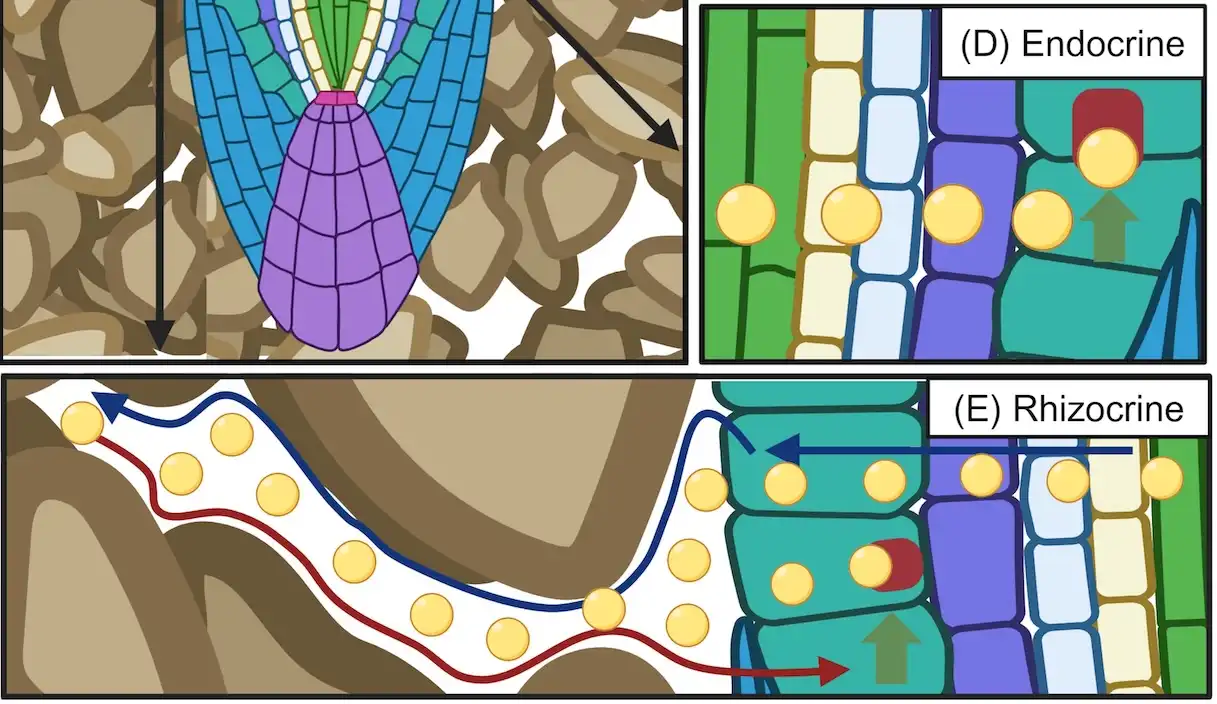The article “Root RADAR: how ‘rhizocrine’signals allow roots to detect and respond to their soil environment and stresses,” published in Journal of Experimental Botany by the Hydrosensing team.
This article discusses how agricultural intensification and climate change are making soils more vulnerable to stresses such as drought, erosion, and compaction, and how roots detect and respond to these stresses by releasing hormone signals into the soil, which helps plants adapt and improve resilience through a proposed “root RADAR” mechanism.
Read the paper: Pandey, B. K., George, T. S., Cooper, H. V., Sturrock, C. J., Bennett, T., & Bennett, M. J. (2024). Root RADAR: how ‘rhizocrine’signals allow roots to detect and respond to their soil environment and stresses. Journal of Experimental Botany, erae490. https://doi.org/10.1093/jxb/erae490
Image credit: Roots employ several classes of hormones including rhizocrine signals that spend time outside of plant tissues in the rhizosphere. A schematic diagram illustrating (A) a longitudinal cross-section of a root growing in soil, and (D–E) examples of the contrasting modes of action for different hormone classes (denoted as yellow circles) involving (D) endocrine signalling (i.e. acting in other organs after long-distance transport), and (E) rhizocrine signalling, where this class of hormone moves outside its root source via the soil (denoted by the blue arrow), returning to the root in response to a soil stress (denoted by the red arrow), triggering an adaptive response, denoted by the green arrow and receptor binding of the hormone signal.



